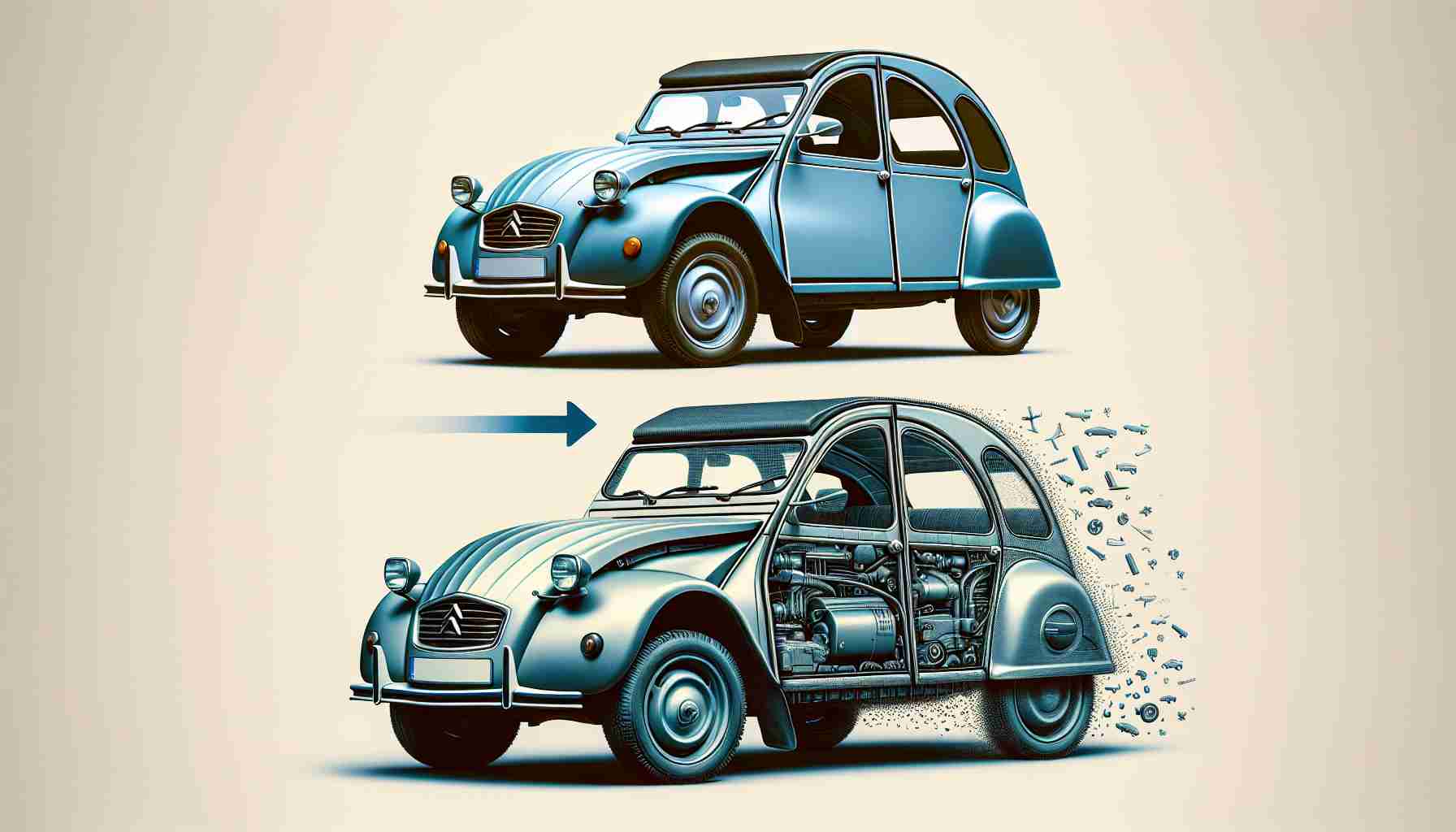Citroën is gearing up to unveil an electrifying version of its legendary 2CV, a move that highlights the current trend of reviving nostalgic automotive models. Originally introduced in the late 1940s, the 2CV quickly became a symbol of practicality and charm, impacting pop culture with its memorable appearances in events like the Tour De France and in films including “For Your Eyes Only”.
Recent reports indicate that Citroën is diving into the design phase for this modernized version, aiming to capture the essence of the original while embracing electric technology. The design leader has hinted at an exciting future, emphasizing that retro designs are not entirely off the table. He conveyed the importance of staying true to the ethos of simplicity and affordability that characterized the first 2CV, which was designed to make transportation accessible for post-war rural residents in France.
The upcoming 2CV is expected to focus on cost-effectiveness and efficiency, striving to make electric vehicles a practical option for everyday drivers. Unlike some manufacturers that opt to rebrand classic names on contemporary SUVs, Citroën seems committed to honoring its heritage with innovative designs and alternatives beyond the SUV market.
As classic models like the Ford Capri make their way back onto the roads and the Renault Twingo prepares for its debut, the automotive world is eager to see which beloved icons might join this electric revival party next.
Nostalgia Meets Innovation: The Cultural and Economic Impacts of Citroën’s Electric 2CV
Citroën’s plan to launch an electrified version of the iconic 2CV represents not just a nostalgic homage, but a significant shift in the automotive industry that could reshape societal attitudes towards electric vehicles (EVs). As consumers increasingly seek sustainable transportation options, the revival of beloved models infused with cutting-edge technology reflects a broader trend where nostalgia intertwines with modern needs. This strategy aims to attract not only car enthusiasts but also environmentally conscious buyers who value both history and innovation.
Cultural significance cannot be understated; the 2CV symbolizes post-war optimism and accessibility, and its return may resonate with younger generations seeking authenticity in a rapidly changing world. This revival could further bridge generational gaps, emphasizing shared values of simplicity and practicality amidst the complexities of contemporary life.
From an economic perspective, Citroën’s move can potentially stimulate the global EV market. By focusing on affordability and efficiency, the company positions itself to capture a segment of consumers who have so far felt excluded from the EV conversation due to high costs. The environmental ramifications are promising, as greater accessibility to EVs can encourage widespread adoption, which is crucial in achieving global carbon reduction targets.
Looking ahead, Citroën’s strategy may pave the way for other manufacturers to revisit their classic lineups, fostering a market where nostalgia and sustainability thrive together, thereby reshaping the automotive landscape for years to come.
Reviving a Classic: The Exciting Return of Citroën’s 2CV as an Electric Vehicle
The Legacy of the 2CV: An Icon Reimagined
Citroën, a brand renowned for its innovative spirit and cultural impacts, is set to bring back the beloved 2CV as an electric vehicle (EV). This revival of a classic model aligns with a growing trend in the automotive industry where nostalgia meets modern technology. The 2CV, originally launched in the late 1940s, is not just a car; it is a cultural icon that epitomizes simplicity and affordability in transportation, particularly instrumental for rural communities in post-war France.
Design and Features: Blending Old and New
The design team at Citroën is eagerly working on a modern incarnation of the 2CV that maintains the charm of the original model. They are focusing on keeping the retro aesthetics while integrating cutting-edge electric vehicle technology. This dual approach is intended to retain the vehicle’s spirit while appealing to today’s environmentally conscious consumers.
Some potential features of the new 2CV include:
– Lightweight Structure: Utilizing modern materials to keep the car light, enhancing efficiency and range.
– Compact Design: Staying true to the original’s small footprint, making it easier to navigate urban environments.
– User-Friendly Technology: Incorporating intuitive controls and connectivity options to meet contemporary user expectations.
Market Analysis: The Demand for Affordable EVs
The shift towards electric vehicles is being driven by consumer demand for sustainable transportation options that do not compromise on affordability. According to recent trends, the global EV market is expected to reach around $800 billion by 2027, fueled by advancements in battery technology and growing environmental awareness among consumers. Citroën’s strategy to introduce an electric 2CV is not merely a nostalgic gesture, but a calculated move to capture this expanding market segment.
Pros and Cons of Reviving Classic Models
Before diving into this innovative endeavor, it’s important to assess the advantages and challenges it brings:
Pros:
– Market Differentiation: The electric 2CV can stand out in a crowded market, appealing to consumers who value heritage and environmental consciousness.
– Brand Loyalty: Reviving a celebrated model can invoke nostalgia, strengthening consumer ties to the brand.
Cons:
– Expectations vs Reality: Meeting consumer expectations of modern performance while retaining classic charm may be challenging.
– Cost vs Accessibility: Balancing advanced EV technology with affordability remains a hurdle for many manufacturers.
Use Cases: Who Will Drive the New 2CV?
The new 2CV is poised to attract various demographics, including:
– Urban Commuters: Its compact size and efficiency make it ideal for city driving.
– Eco-conscious Consumers: Those looking for sustainable transport solutions will find an appealing option in the electric 2CV.
– Nostalgic Buyers: Former enthusiasts of the original model who are eager for an updated version.
Conclusion: Predictions for the Future
As Citroën prepares to unveil this modern version of the 2CV, it highlights a key trend in the automotive world: the merging of past and future to create vehicles that are not only functional but emotionally resonant. With the rising popularity of EVs and a strong consumer push towards sustainability, we can anticipate that the revival of beloved classics like the 2CV might inspire other manufacturers to re-evaluate their vintage lineups.
For more insights into the evolving automotive landscape, visit Citroën.













